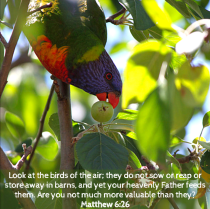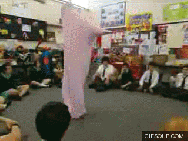It’s easy to lose interest in life when you’re consumed with pain, depression and other awful symptoms. I’ve found engaging with my illnesses and experience creatively very empowering.
You don’t have to be the next Van Gough, Ansel Adams, Sylvia Plath, PewDiePie or Alicia Keys to be creative. I have compiled a list if ‘creative’ things you can have a go at, even if you think you suck.
By creative, I mean expressing yourself in an imaginative, artistic, innovative, inspirational, personal or unique way. You can ‘creatively engage’ with your illness by using any creative medium to:
- process the pain and grief your illness has caused;
- externalise overwhelming feelings;
- articulate acceptance;
- rest and relax;
- create awareness about your illness;
- reach out for support;
- distract yourself for a while;
- innovate a way to re-engage with an activity your illness has prevented you from doing;
- encourage others to persevere;
- show others they’re not alone in their illness;
- remind yourself that you have hope;
- share your story and experience;
- reveal your resilience and strength;
- ask for support;
- project positivity;
- express gratitude, and
- break stigma.
Here is a list of 30 ways you can engage creatively as another tool to help you manage your journey with chronic illness.
 1. Go for a stroll in the park, a walk on the beach or simply sit in your sunny backyard and take a few pictures. Anyone can take a photo of the grass, a tree, a bird, the clouds and the sun on their phone. If you’re feeling a bit crazy, add your favourite filter.
1. Go for a stroll in the park, a walk on the beach or simply sit in your sunny backyard and take a few pictures. Anyone can take a photo of the grass, a tree, a bird, the clouds and the sun on their phone. If you’re feeling a bit crazy, add your favourite filter.
2. Pick a photo you have taken, or download a free stock image and add the cheesiest quote you can find (or your favourite quote or verse from scripture.) You can use a photo editing program (like Photoshop or GIMP), a website (like Canva), or even Microsoft Word.
 3. Type and print encouraging statements with fun fonts to put on your wall.
3. Type and print encouraging statements with fun fonts to put on your wall.
4. Print your favourite family or holiday photos and make a collage. If you’re renting and don’t want to risk ruining the walls with blue tac, you can get a whiteboard or cork-board. I spray painted an ugly room divider to use as a giant pin board. …or you could finally scrapbook those holiday and baby photos.
5. Give colouring-in a try. The adult colouring in fad has taken the world by storm, have you tried it yet? Buy one from Kmart or your local bookstore, borrow your child’s activity book or find a picture to print through a ‘Google Images‘ search.
6.Communicate with pictures. Visualise your how you feel and what it’s like to live with your illness and paint or draw it.
 7. Experiment! Go crazy, painting, sketching and blending with different mediums. Most variety shops sell (oil, soft and hard) pastels, charcoal, (acrylic, watercolour and oil) paint and canvas pads. Experimenting is fun and can be a great distraction. On bad days I’ve been known to see how many shades of black, white and grey I can mix into one picture. When I’m feeling a bit more optimistic, I’ll play with colour.
7. Experiment! Go crazy, painting, sketching and blending with different mediums. Most variety shops sell (oil, soft and hard) pastels, charcoal, (acrylic, watercolour and oil) paint and canvas pads. Experimenting is fun and can be a great distraction. On bad days I’ve been known to see how many shades of black, white and grey I can mix into one picture. When I’m feeling a bit more optimistic, I’ll play with colour.
8. I’m an awful drawer, but sometimes it’s fun to sketch. My favourite is creating stick-figure comics.
9. Too scared to try karaoke? You can now download karaoke apps onto your phone or tablet to take ‘singing in the shower’ to the next level.
10. Pick up the musical instrument you haven’t played in years. We all have a recorder hidden at the back of our wardrobe. My preference is the guitar – after 10 years I still can’t read music.
11. Write a song to share what it’s like having your illness and encourage others.
12. Don’t have a musical bone in your body? Try changing the lyrics to a song or nursery rhyme.
13. Create playlists for every occasion: to relax, feel like singing, angst, fight songs, etc.
14. Make up an interpretive dance – I can never go past Vanessa Carlton’s 1000 Miles.
15. Write a short story.
16. Create a character you can relate to and write a monologue, one-act play, radio script or a short film to explore and communicate the characters journey.
17. Start a journal/diary, blogging or (and you don’t have to edit and publish it for the world to see, but if you have a laptop with a webcam) a video journal. 
18. Write a poem – if you don’t ‘do poetry’ you could always start with a simple Haiku or Limerick.
or Limerick.
19.Write a letter to yourself.
20. Turn statistics, research and (accurate) medical information into an infographic.
21. Put on an apron and be a MasterChef by cooking your favourite cuisine or experimenting with a classic dish.
22. Create the next ‘Paralympic Sport’ – if there is a physical activity/sport you love, but can no longer play it due to your illness, come up with an adaptation that fits your physical
limitations.
23. Knit! You can never have too many scarves, beanies or comfort blankets. This beautifully adorable yellow teddy was made by Lee Miller.
24. Give your alter ego life and make a (sock) puppet.
25. If you’re a gamer and can code, create a game related to your illness – I dream of playing an arcade game called “The Angry Uterus.”
26. Design a personal tattoo (which is in no way a commitment to get a tattoo).
27. Make some (awareness) jewellery.
28. Design a t-shirt and wear your message. You can never have too many awareness t-shirts! (Although my mother would disagree.)
too many awareness t-shirts! (Although my mother would disagree.)
29. Get pretty and expressive, experimenting with makeup and nail art. This fantastic body art is by Kiley Inman.
30. Download a meme generator and amuse yourself.
If you can afford it, pick a hobby/skill and invest in some lessons. I’ve chosen to prioritise a half an hour singing lesson every two weeks into my budget. I then record the lesson so I can continue to practice between classes. It is both empowering and encouraging to see the progress/development of that still over time.
Ask others to get involved; sometimes it’s nice just to relax with a friend and have fun together. Sometimes laughter is the best medicine. I’ve also had friends with artistic talent sit down and teach me for no cost.
The most important thing to remember is not to be a perfectionist. It’s not about the finished product; it’s about engaging with your illness, disease or disability in a creative way. Short-term, being creative will help you relax, decrease tension and give you another way to communicate. The long-term benefits of developing this habit is often insight, acceptance and healing.
I’d love to hear from you!
Do you have anything to share?
Do you have anything to add the list?
Have you noticed the benefits of engaging creatively with your illness?














Great ideas. I love the adult coloring book movement! I’m buying one tomorrow before I go on a trip.
LikeLike
Have fun with that!!
LikeLike
This is utterly delightful. Definitely trying some of these this weekend!!
LikeLike
I’d love to see how it goes!!
LikeLike
This is brilliant – permission to reblog? We feel like more people need to know about lists like this. Quite often, lists to help with illness aren’t actually this fun. 😉 x
LikeLiked by 1 person
Please do!! I’d be honoured ❤
LikeLiked by 1 person
Reblogged this on StarkravingInsanity and commented:
This is brilliant, and should be shared for both Chronic pain and mental illness.
LikeLike